.post-accordion-wrapper .accordion-content {
max-height: 0;
overflow: hidden;
}
One of the key conditions for making cryptocurrencies part of everyday life is having convenient entry and exit points. Today, we’re exploring crypto cards — a powerful tool that allows you to convert digital assets into fiat, use them for everyday payments, and even access credit lines backed by your crypto holdings.
This article was prepared by Incrypted for educational purposes. We hope it helps you better understand and navigate the crypto landscape.
| Card name | Card type | Where available |
| Trustee Plus | MasterCard | EEA |
| Bybit Card | MasterCard | EEA, UK, Argentina, Brazil, AIFC, Australia |
| Coinbase Card Coinbase | Visa | USA |
| Crypto.com Visa Card | Visa | EEA, USA, Brazil, Singapure, Canada, Australiam, UK |
| Wirex card | MasterCard | EEA, UK, Australia |
| BitPay crypto debit card | MasterCard | USA |
| CL Card Powered by Ledger | Visa | EEA, UK |
| Nexo Card | MasterCard | EEA, UK |
| Gate Card | Visa | EEA |
| MetaMask Card | MasterCard | EEA, UK, Brazil, Mexico, Colombia |
| Gnosis Pay | Visa | EEA |
| Gemini Credit Card | MasterCard | USA |
What Is a Crypto Card and How Does It Work?
A crypto card is a payment tool that allows you to use cryptocurrency for everyday purchases and transactions — just like a traditional bank card.
Since cryptocurrencies aren’t recognized as legal tender in most countries, and crypto payment processing is still limited to select merchants, crypto cards bridge the gap by converting digital assets into fiat at the point of sale.
Here’s how it typically works:
- You top up your card account with crypto via the issuer’s platform.
- When you make a purchase, the issuer automatically deducts the necessary amount in crypto and converts it into fiat currency.
- The fiat payment is then processed through a traditional payment network, just like any other card transaction.
That said, the exact mechanics can vary depending on the provider. Some platforms offer built-in converters, requiring users to manually exchange crypto into fiat to maintain a card balance.
This brings us to a key point: the issuer is the heart of any crypto card product. They determine crucial factors like fees, geographic availability, supported currencies, and how crypto-to-fiat conversion is handled.
What to Consider When Choosing a Crypto Card?
There are dozens of crypto cards on the market today, each offering different features and issued by various companies. To help you navigate the options, here are the key factors to consider when choosing the right card for your needs:
- Issuer credibility: Regulation, trust, and reputation are essential. Check whether the company has experienced security breaches or whether users have faced issues with card usage, crypto deposits, or withdrawals.
- Conversion method: As mentioned earlier, some cards convert crypto to fiat automatically at the time of purchase, while others require manual conversion. This has a direct impact on how convenient the card is to use. Conversion typically happens through the issuer’s own platform or a partnered exchange.
- Fees: Since crypto payments often involve multiple intermediaries, transaction fees may include card issuer fees, payment processor charges, and potentially crypto-to-fiat conversion costs.
Note: You may also encounter fixed fees for card issuance or maintenance. Additionally, hidden fees may be baked into unfavorable exchange rates.
- Payment network provider: Most crypto cards are issued in partnership with Visa or Mastercard, and less commonly with UnionPay or other networks. This can affect where and how the card can be used, as some merchants only accept specific providers.
- Supported cryptocurrencies: Typically, crypto card providers support only a limited number of digital assets. This may require users to pre-convert their funds. Be sure the issuer allows you to fund the card with cryptocurrencies that are convenient for you.
Next, we’ll review 12 popular crypto cards from leading issuers to help you determine which one best fits your needs for withdrawing and spending digital assets in everyday life.
Top 12 Crypto Cards for Everyday Spending
The most crypto-friendly regulations for card issuance are currently found in the European Economic Area (EEA) and the United States. As a result, most crypto card issuers focus on serving one of these regions — and only occasionally offer global support.
The main providers of crypto cards fall into two categories: cryptocurrency exchanges, which already have robust systems for storing user funds and converting crypto to fiat, and specialized fintech platforms that offer payment infrastructure built around digital assets.
Trustee Plus
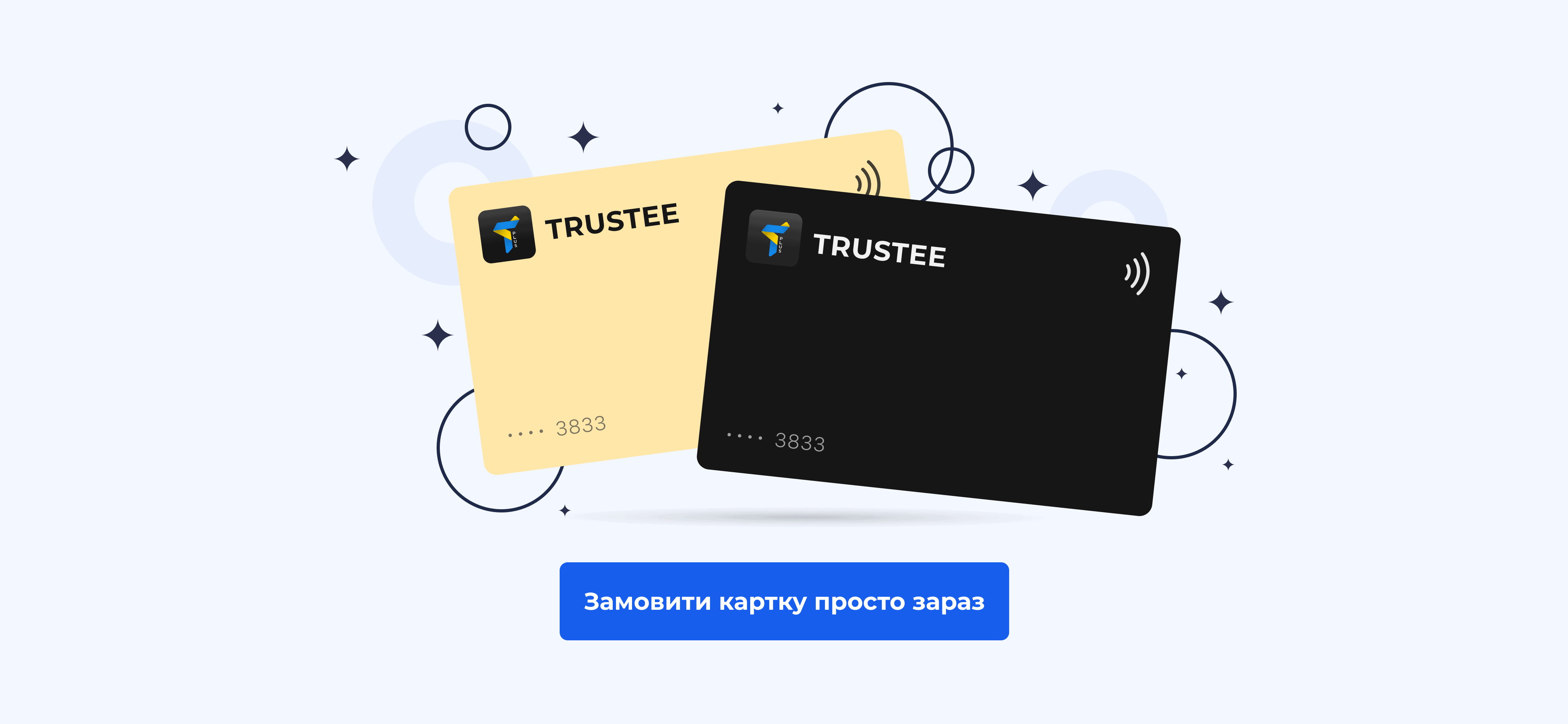

| Card type | Debit MasterCard |
| Currencies supported | EUR, BTC, ETH, USDT, SOL |
| Where available | EEA |
| Fees | 0.5% crypto conversion fee, ATM withdrawals 1.5% + 1EUR |
| Cashback | Up to 30% cashback on fees |
| Referral Programа | 45% |
| Official Website | https://trusteeglobal.com/ |
Trustee Plus is a digital asset management platform best known for its mobile app — available on both the App Store and Google Play. The app functions as a secure multi-currency crypto wallet, offering instant exchanges and built-in tools for buying and selling crypto with fiat currencies.
Thanks to a partnership between Trustee Plus and Quicko, users can now spend crypto in everyday life with ease. All you need is a Quicko Digital Card — a virtual payment card that enables seamless crypto-to-fiat transactions.
Though the Quicko Digital Card is issued via the standalone Quicko Digitall app, it integrates directly with your Trustee Plus account, allowing for smooth and convenient crypto payments.
How to Get Started with the Quicko Digital Card:
- Register an account in the Trustee Plus app. Learn more here.
- Verify your identity (KYC) using a valid document — such as an ID card, passport, or residence permit.
- Top up your Trustee Plus account with euros or supported cryptocurrencies like BTC, ETH, USDT, or USDC.
- Download the Quicko Digital app (available on the App Store and Google Play and sign up using the same phone number linked to your Trustee Plus account.
After that, you’ll need to sync your accounts across both apps. Just look for the sync option within the app interfaces — it’s quick and straightforward.


Next, on the main screen of the Quicko Digital app, tap “Issue Card” and wait for the process to complete.


Once issued, the card can be added to Apple Pay or Google Pay and used like any regular payment method. When making a purchase, cryptocurrency from your Trustee Plus balance is automatically converted into fiat at the current market rate.
Issuing the virtual card is completely free. There are no maintenance fees, and transaction fees are 0%. Top-ups from your Trustee Plus balance are also free of charge. The card is valid for 5 years.
Another standout feature of Trustee Plus is the option to obtain a personal euro IBAN — a Polish bank account that can be activated for just €1. Once set up, it functions as a full-fledged European account: you can top it up from your regular bank accounts or by exchanging crypto for euros directly within the app. From this IBAN, you can send transfers to any account within the EU, with a per-transaction limit of up to €5,000 — significantly higher than the limits of the standard Quicko card.
This feature works as a powerful complement to the virtual card and is ideal for larger transactions, such as property purchases, paying for services, and more.
Important: As of May 20, 2025, Trustee Plus has temporarily suspended new applications from residents of Ukraine. However, the service remains available to Ukrainian citizens who are currently located within the EU. To use it, you simply need to verify a residential address within the European Economic Area (EEA).
Bybit Card
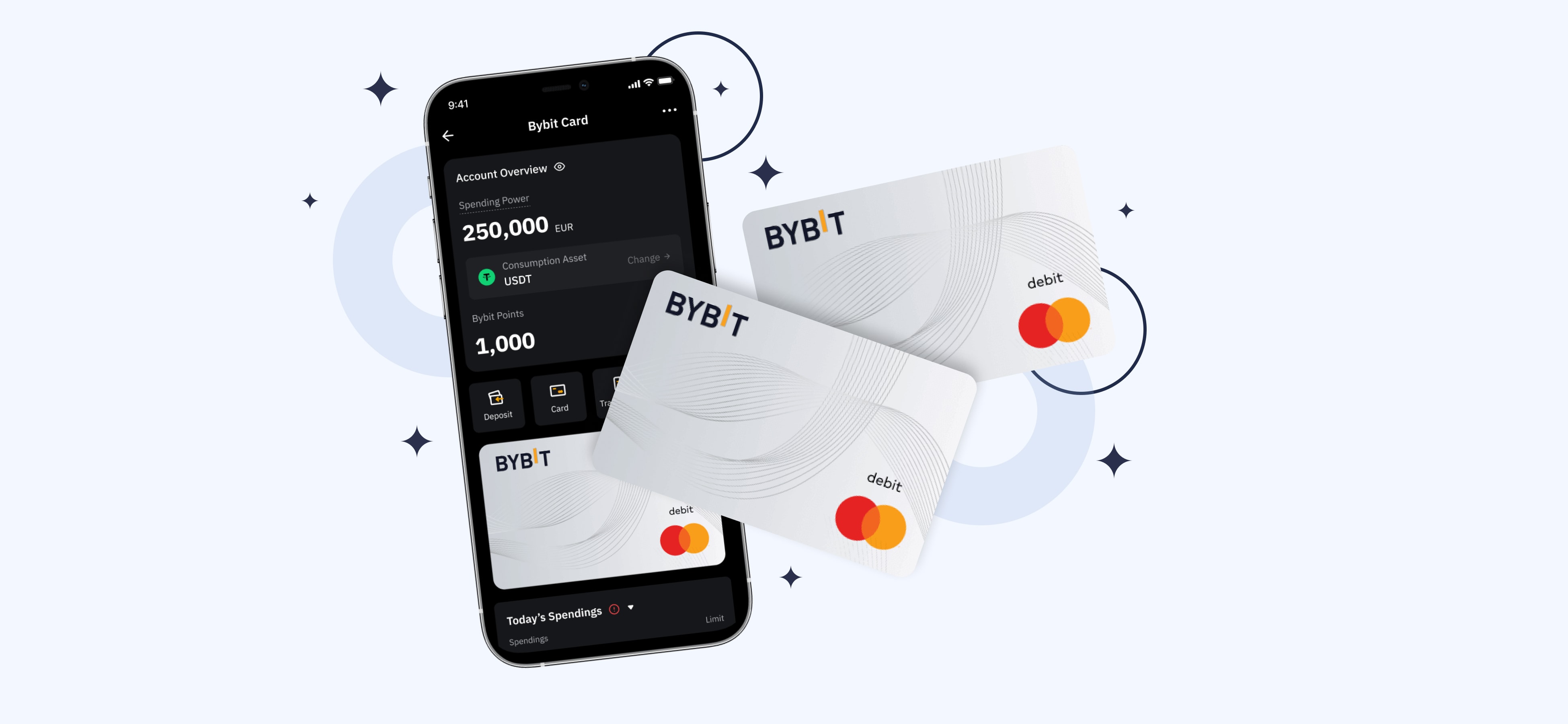

| Card type | Payment (debit) |
| Currencies supported | BTC, ETH, XRP, TON, USDT, USDC, MNT, BNB |
| Where available | EEA, UK, Argentina, Brazil, AIFC, Australia |
| Fees | 1% fee for fiat currency exchange, 0.9% fee for cryptocurrency exchange, 2% fee for cash withdrawals (0% fee up to $150 per month) |
| Cashback | 2% to 10% cashback for the first 30 days (for new users) |
Bybit Card — launched in partnership with the UK-based payment infrastructure provider Moorwand, operating under a Mastercard license.
The card is linked directly to the user’s exchange balance and automatically converts cryptocurrency to fiat for payments.
Coinbase Card
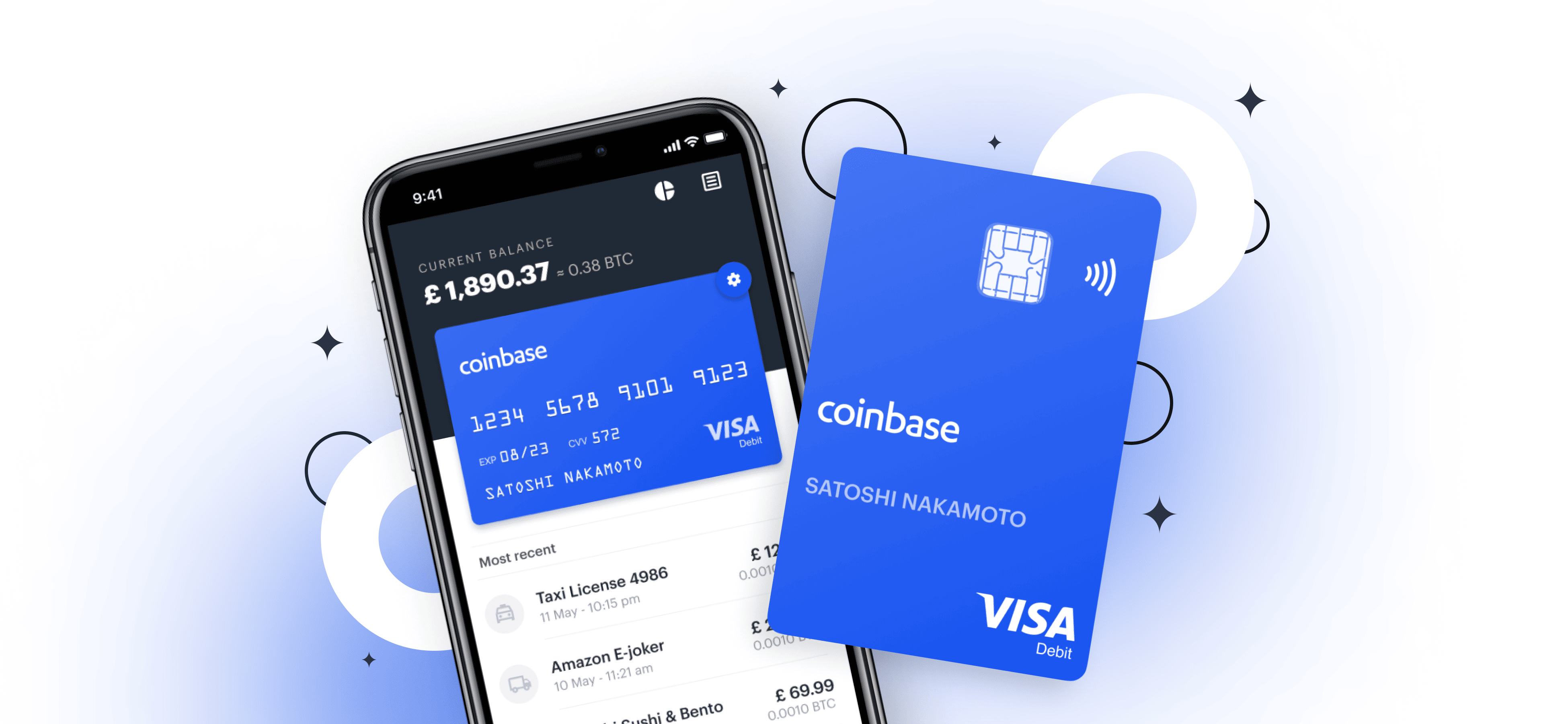

| Card type | Payment (debit) |
| Currencies supported | BTC, ETH, USDT, USDC, and all cryptocurrencies traded on Coinbase + USD |
| Where available | USA (except Hawaii) |
| Fees | None |
| Cashback | 0.5% fee in cryptocurrency (BTC, ETH) |
Coinbase Card is a crypto card offered by the US-regulated exchange Coinbase. It comes as a physical Visa card for payments in USD. You can pay using any cryptocurrency supported on the platform — which is automatically converted to dollars — or use credit backed by your crypto collateral on Coinbase.
This option is less popular among Ukrainian users due to its limited geographic availability. Additionally, converting crypto to fiat for card payments is taxable. While there are no transaction fees, the exchange warns of potential price slippage during conversion.
The daily spending limit is $2,500.
Crypto.com Visa Card
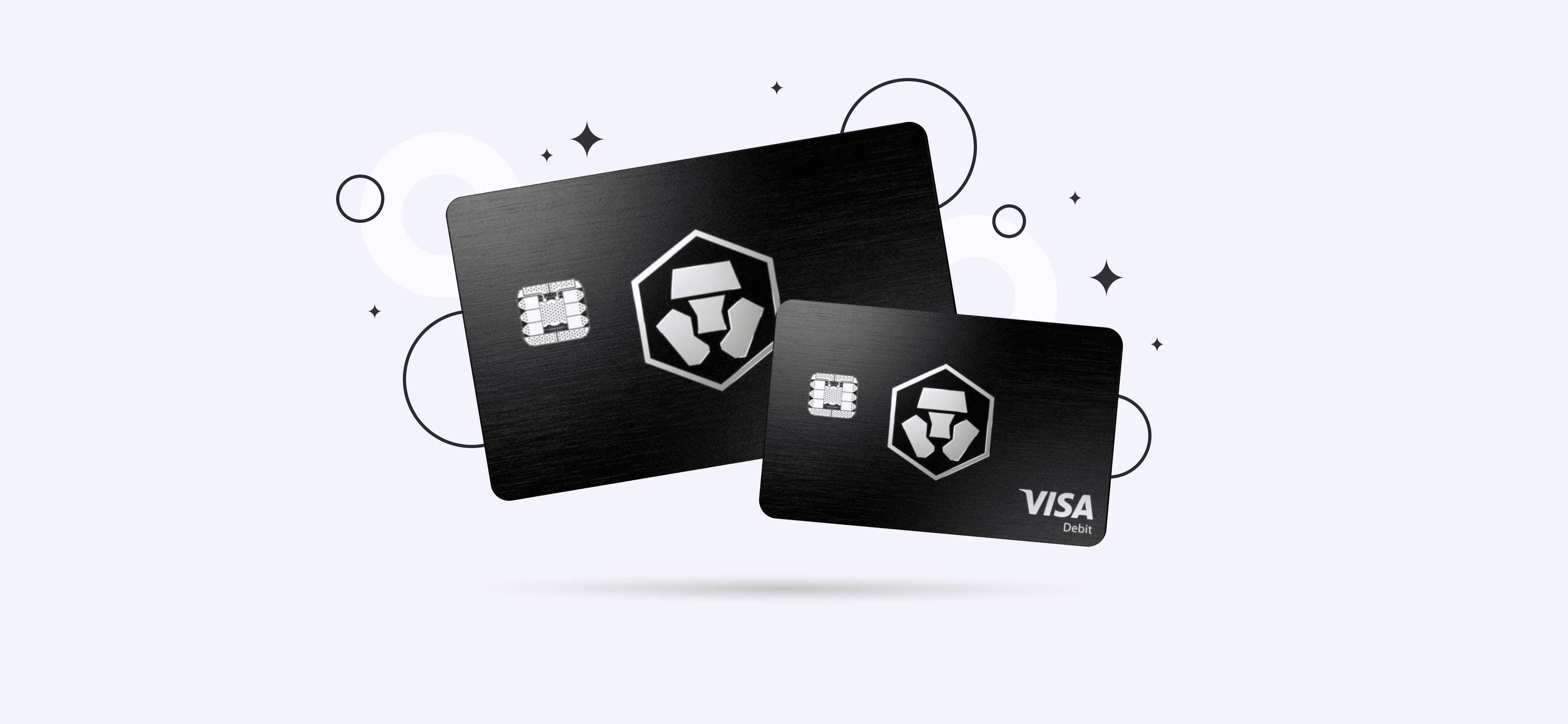

| Card type | Prepaid (topped up manually) |
| Currencies supported | BTC, ETH, USDT, USDC, and all cryptocurrencies traded on Crypto.com, plus local fiat currencies supported in the respective countries. |
| Where available | USA, EEA, Brazil, Singapure, Canada, Australia, UK |
| Fees | Fees vary by jurisdiction. Full list available here. |
| Cashback | Loyalty Program CRO Rewards (до 8%) |
Crypto.com Visa Card is a project by the Crypto.com exchange. The platform initially started as a crypto card provider, which is why it offers the widest variety of products, features, and supported jurisdictions. The card is available as either a virtual or physical Visa card.
The project offers different card tiers based on the amount of staked CRO tokens. Premium cardholders not only earn rewards in CRO but also receive perks such as airport lounge access, discounts on streaming service subscriptions, access to OTC trading, and higher limits for fee-free cash withdrawals.
Fees vary depending on the user’s region and card tier — each with its own thresholds for fee-free transactions. For example, Midnight Blue users can withdraw up to $200 per month in cash without fees, while Rose Gold holders enjoy a $1,000 monthly limit. Full details can be found here.
Important: Being a prepaid card means it’s not linked to an exchange account like the Bybit card and must be topped up manually with either fiat or digital currency.
Wirex card


| Card type | Payment (debit), credit card |
| Currencies supported | BTC, ETH, LTC, XRP, XLM, WXT, WAVES, DAI, XNO, and over 50 other cryptocurrencies, + 10 fiat currencies including USD, EUR, and GBP. |
| Where available | EEA, UK, Australia |
| Fees | Full list of fees is available here. |
| Cashback | Up to 8% cashback through the Cryptoback program |
Wirex card is a crypto card offered by one of the popular digital wallet providers. Available as either a virtual or physical Mastercard, it supports a wide range of cryptocurrencies and fiat currencies, optimized for use in specific EEA countries.
The card is linked to your Wirex balance, so when making payments, crypto is automatically converted to the required fiat currency via an OTC platform. Wirex also offers a lending program secured by crypto with 90% over-collateralization. Additionally, Wirex provides a non-custodial wallet for managing your crypto assets.
BitPay crypto debit card
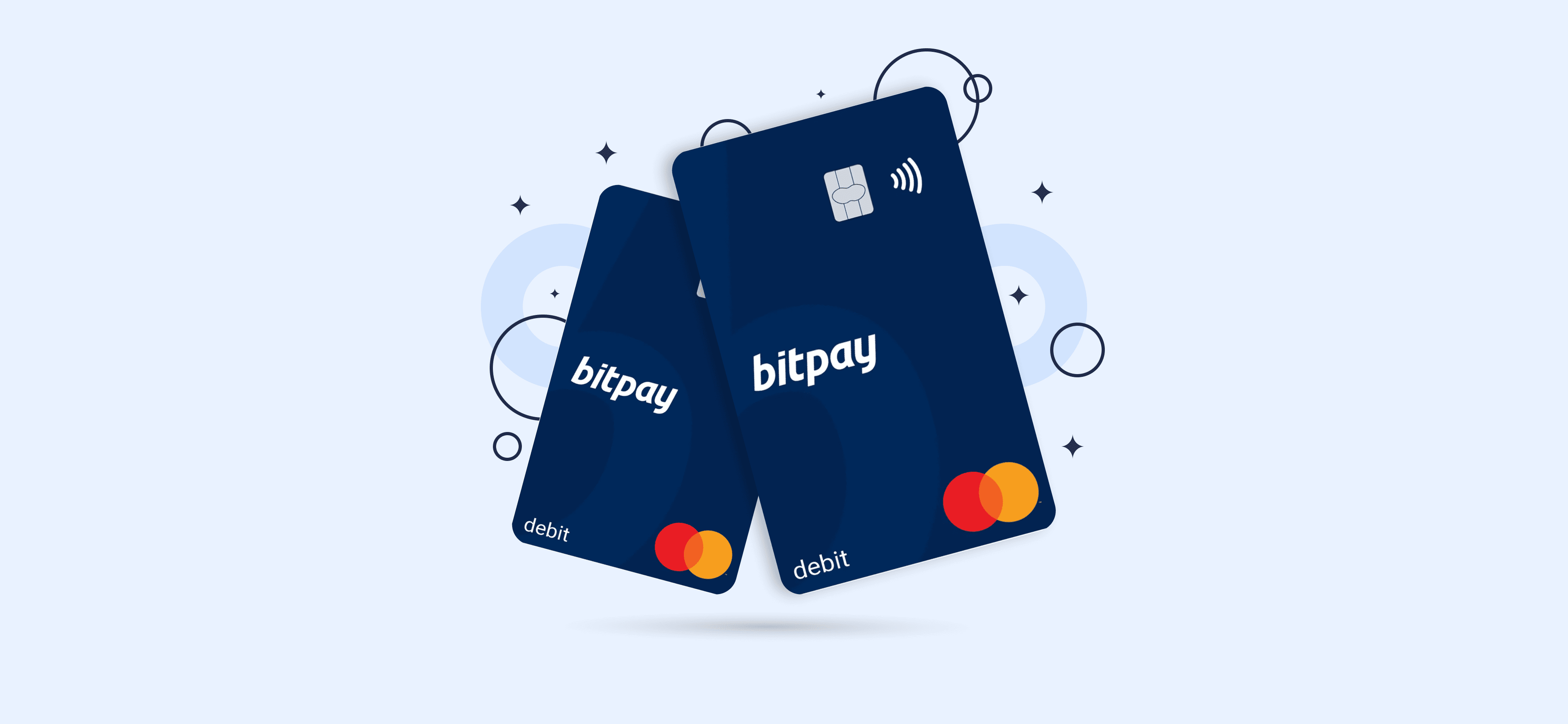

| Card type | Prepaid (replenished manually) |
| Currencies supported | BTC, ETH, BCH, DOGE, SHIB, LTC, APE, POL, DAI, USDC, BUSD, WBTC, USDP, GUSD, EUROC + USD |
| Where available | USA |
| Fees | 1% fee on deposits, 2% + $0.25 per transaction, and $2.50 for cash withdrawals |
| Cashback | Depends on partners. All information is available in the BitPay app. |
BitPay crypto debit card is a payment crypto card offered by one of the popular services for commercial crypto payments. Available as a virtual or physical Mastercard for transactions in USD, it allows linking a Coinbase exchange account—making it appealing to Coinbase users, since the Coinbase card only supports payments via Visa.
The main drawback is that the card is available only to US residents. Additionally, the BitPay crypto debit card is prepaid, requiring manual top-ups via the BitPay wallet or Coinbase account. The card is primarily convenient for merchants accepting BitPay payments and their customers.
CL Card Powered by Ledger
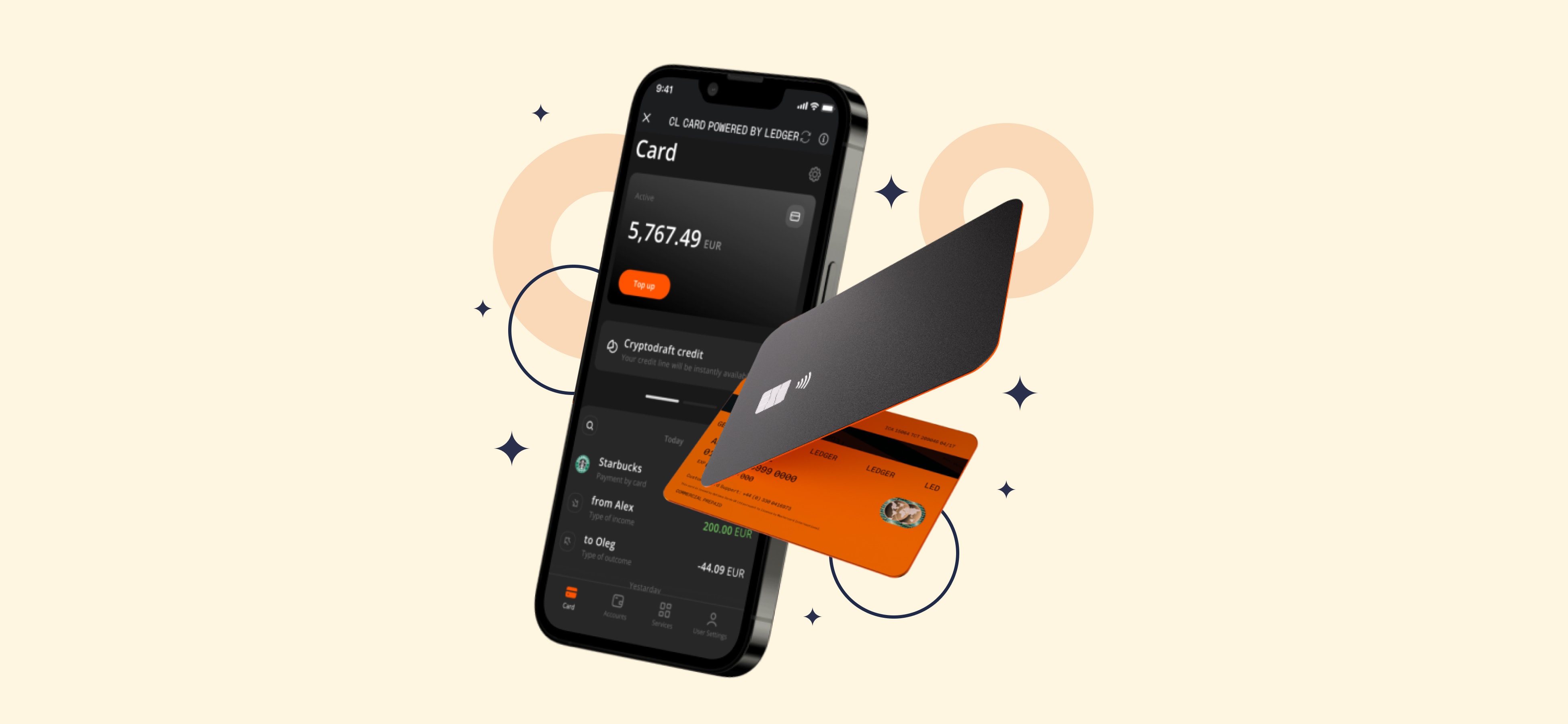

| Card type | Payment (debit), credit card |
| Currencies supported | BTC, BCH, ETH, LTC, XRP, GBP, EUR |
| Where available | EEA, UK |
| Fees | Payments are free. Full list of fees is available here |
| Cashback | 1% у BTC, USDT і 2% у BXX |
CL Card Powered by Ledger is a specialized crypto card designed for owners of the Ledger hardware wallet. In this setup, Ledger enables crypto top-ups via Ledger Live, while the card itself is managed by Baanx.
The CL Card is available as a physical Visa card for payments in EUR or GBP. It allows for instant crypto payments through the Baanx wallet, and users can also access credit backed by their crypto assets.
Nexo Card
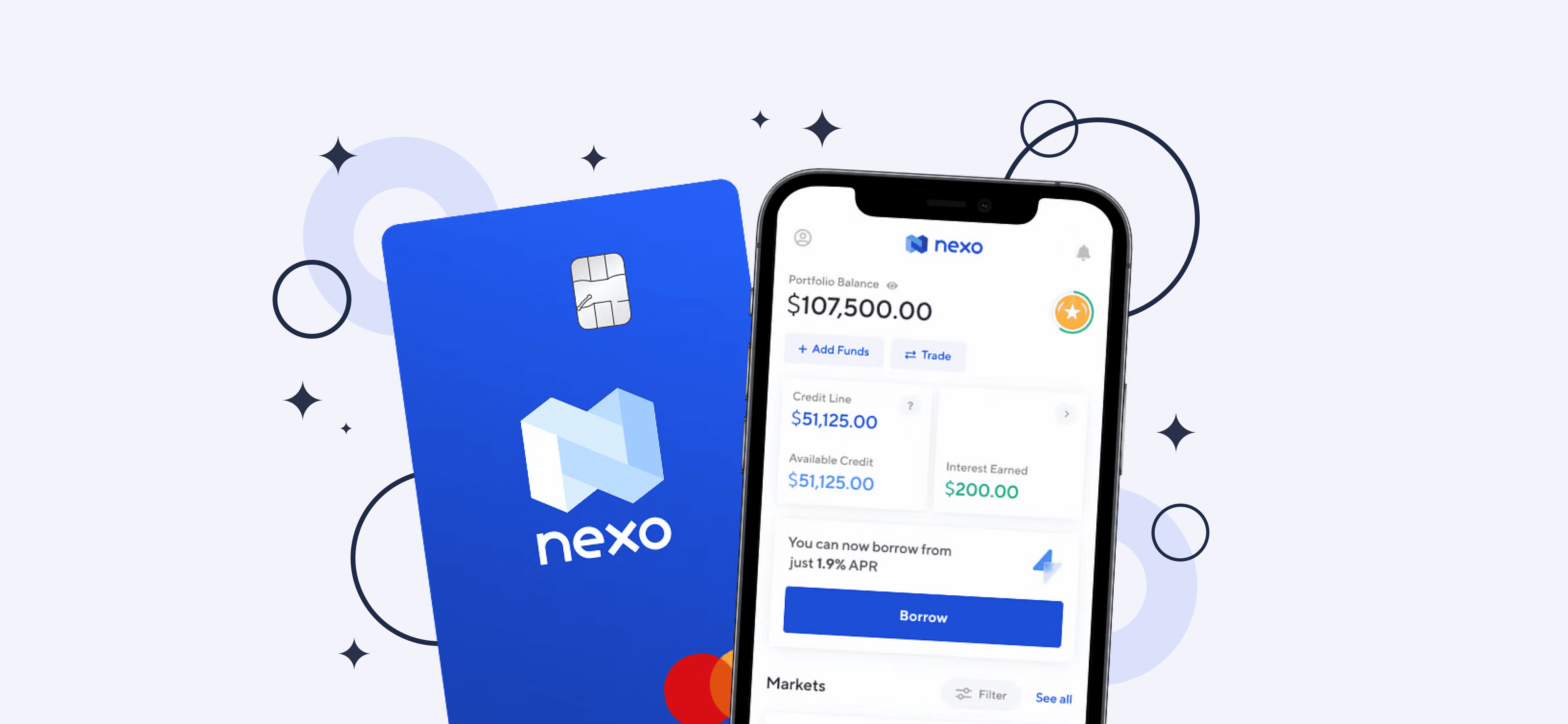

| Card type | Credit card |
| Currencies supported | BTC, ETH, USDT, USDC, and over 60 other cryptocurrencies, as well as EUR. |
| Where available | EEA, UK |
| Fees | 0% conversion fee. Up to 13.9% APR on credit usage. 2% fee for cash withdrawals (up to €2,000 free, depending on card tier). Foreign transaction fees of up to 2% on weekdays and up to 2.5% on weekends (varies by region). |
| Cashback | Up to 2% in NEXO and up to 0.5% in BTC (depending on card tier). More details here. |
Nexo Card is a crypto card offered by the lending platform Nexo. Unlike previous cards, it’s a credit card, not a payment card, and operates based on Nexo’s instant credit line.
Users deposit digital assets, which Nexo uses as collateral to issue a loan in fiat currency (EUR). The user can then make purchases and later repay the loan using their crypto assets.
One of Nexo’s claimed advantages is tax efficiency: since users are not technically selling their crypto, the transaction may not trigger taxable events.
Note: The Nexo Card is available as both a physical and virtual card. To activate the crypto card, users must hold at least $50 in assets for the virtual version or $5,000 in assets plus Gold Loyalty Tier for the physical card.
Gate Card


| Card type | Prepaid (replenished manually) |
| Currencies supported | BTC, ETH, USDT, USDC, and other assets traded on Gate. |
| Where available | EEA |
| Fees | Base rate: 0.9% crypto conversion fee. |
| Cashback | Up to 7% |
Gate Card is a crypto debit card by the Gate.io exchange, allowing users to spend digital assets in real time for everyday transactions across most countries in the European Economic Area (EEA). Launched in June 2024, the card is available as both a physical and virtual Visa, and supports Google Pay.
As with other centralized platforms, the Gate Card is linked to the user’s exchange account on Gate.io. When making a purchase or withdrawing cash from an ATM, the required amount of cryptocurrency is automatically deducted from the exchange balance and converted into fiat.
The issuance fee for the physical card is €10. Additionally, for transactions made in any currency other than euros, the platform charges an extra fee ranging from 0.2% to 2%, depending on the country. For this reason, the card is best suited for EU residents.
MetaMask Card


| Card type | Debit |
| Currencies supported | USDC, USDT, WETH (Linea network) |
| Where available | EEA, UK, Brazil, Mexico, Colombia |
| Fees | 0% conversion fee. Additional charges may apply depending on the region. |
| Cashback | No cashback information available. |
MetaMask Card is a crypto card launched as a pilot project by MetaMask in collaboration with Mastercard and Baanx. The card allows users to pay with cryptocurrency at any merchant that accepts Mastercard.
Unlike many other crypto cards operating on a prepaid model, the MetaMask Card functions as a debit card, enabling payments directly from the MetaMask wallet while keeping control of assets until the moment of payment.
One of the key advantages of the MetaMask Card is removing barriers to everyday crypto use without needing to cash out via centralized exchanges or converters. For secure and efficient payments, it leverages the Linea blockchain and Mastercard’s global network.
To get the card, users need to visit the MetaMask Portfolio service and navigate to the “Card” section. Eligible users will be redirected to the Crypto Life platform to set up their account and card.
Gnosis Pay


| Card type | Debit |
| Currencies supported | EURe, GNO, and other tokens on the Gnosis Chain. |
| Where available | EEA (full list of countries available here) |
| Fees | 0% fees on transactions, currency exchange, and cash withdrawals. |
| Cashback | Up to 5%, paid in GNO. Bonus +1% for OG NFT holders. |
Gnosis Pay Card is the first Visa debit card linked to the non-custodial Safe blockchain wallet. The card enables payments with digital assets anywhere Visa is accepted. The primary funding currency is EURe, which allows real-time payments with no fees.
One unique feature of the card is the ability to customize it using an ENS name. All assets are stored in the Safe wallet, ensuring user security and control over funds.
Additionally, the team plans to add IBAN support for euro transfers and integration with Apple Pay and Google Pay in the future.
To get the card, users need to fund their Gnosis Pay account with EURe on the Gnosis Chain, complete KYC, and finalize the application process on the project’s website.
Gemini Credit Card


| Card type | Credit |
| Currencies supported | Bitcoin and over 30 cryptocurrencies available on the Geminii platform. |
| Where available | USA |
| Fees | No annual fee; other charges not specified. |
| Cashback | Up to 3% on dining, 2% on groceries, and 1% on other purchases. |
Gemini Credit Card is a credit card issued jointly by Gemini, Mastercard, and WebBank.
The card features instant rewards that are automatically credited to your Gemini account, with no annual fee.
Once issued, the card can be used via mobile wallets, providing instant access to funds. Users also benefit from Mastercard’s premium perks, including exclusive offers from DoorDash, HelloFresh, Lyft, and ShopRunner, as well as ID theft protection.
The Gemini Credit Card is available to U.S. residents and can be used anywhere Mastercard is accepted.
Conclusion
A crypto card is a convenient tool for everyday use of digital assets and their fast conversion into fiat currency. It allows you to pay for goods and services with the same ease as a regular card but without the need to open a traditional bank account.
There are several dozen similar products on the market from crypto exchanges and specialized services. To choose the best card for your needs, consider the following factors:
- Issuer reliability;
- Fee structure;
- Payment infrastructure provider;
- Conversion mechanism;
- Geographic coverage;
- Supported cryptocurrencies.
These criteria directly affect the security, cost, and convenience of using a crypto card. If you’re unsure where to start your search, use the list of crypto cards from reputable issuers provided at the beginning of this article. It will help you quickly compare key differences and find the most suitable product.
Frequently Asked Questions
.post-accordion-wrapper .accordion-content {
max-height: 0;
overflow: hidden;
}